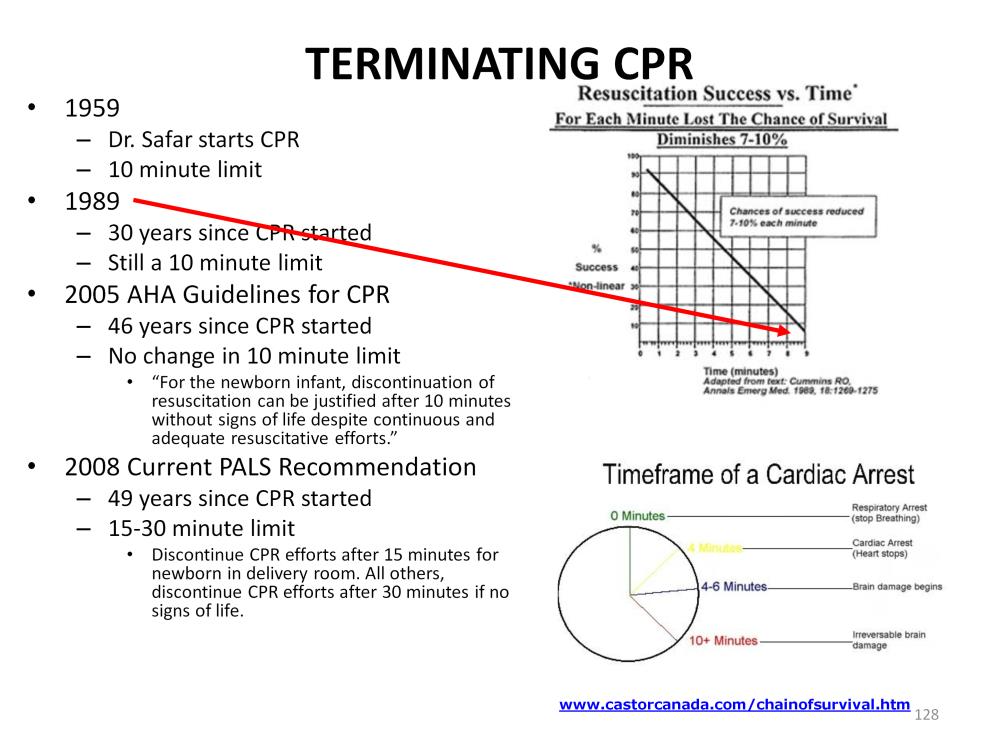
The success of modern CPR resuscitation has not significantly improved since its inception in 1959 at Johns Hopkins University. Even after 30 years of experience, survival for patients undergoing in-house CPR for more than ten minutes was very poor in 1989. In 2005 (46 years after the initiation of CPR), the American Heart Association (AHA) resuscitation recommendation* for newborns is to discontinue CPR in 10 minutes if there are no signs of life. Pediatric Advanced Life Support (PALS) currently recommends discontinuing CPR efforts after 15 minutes in newborns and 30 minutes in all others. Successful CPR resuscitation lasting longer than 15 minutes still has a very poor outcome despite 50 years of experience.
Unless the heart can be restarted within ten minutes, the thinking is that brain damage becomes irreversible and that effective chest compressions, even when started early after cardiac arrest, cannot supply enough oxygen to the brain, heart and other organs to prevent their death from anoxia for more than 30 minutes.
*2005 American Heart Association Guidelines for Cardiopulmonary Resuscitation and Emergency Cardiovascular Care. Circulation 2005;112:IV1-203.

Perfusion Theory is an educational platform for the Oxygen Pressure Field Theory (OPFT). August Krogh’s theoretical concept of the oxygen pressure field is explained and then applied to clinical applications in perfusion practice.